Baltimore offers a model for creating a wood-based economy in your own community. Its success rests on a systematic, logical strategic approach and the strength of its partnerships. Some steps are strategic; others are practical and tactical.
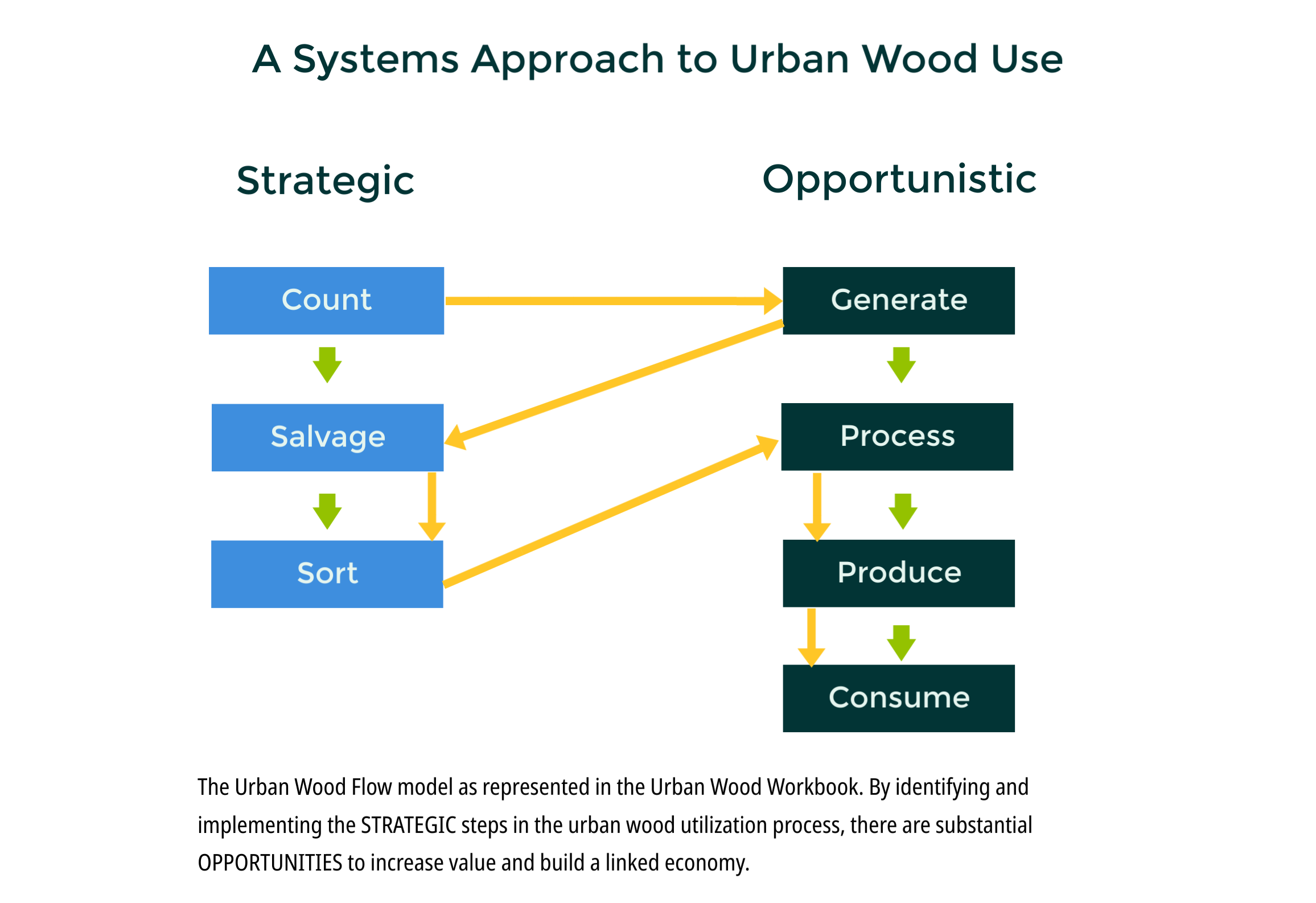
What you find when you explore them will shape the nature and extent of an urban wood program in your community.
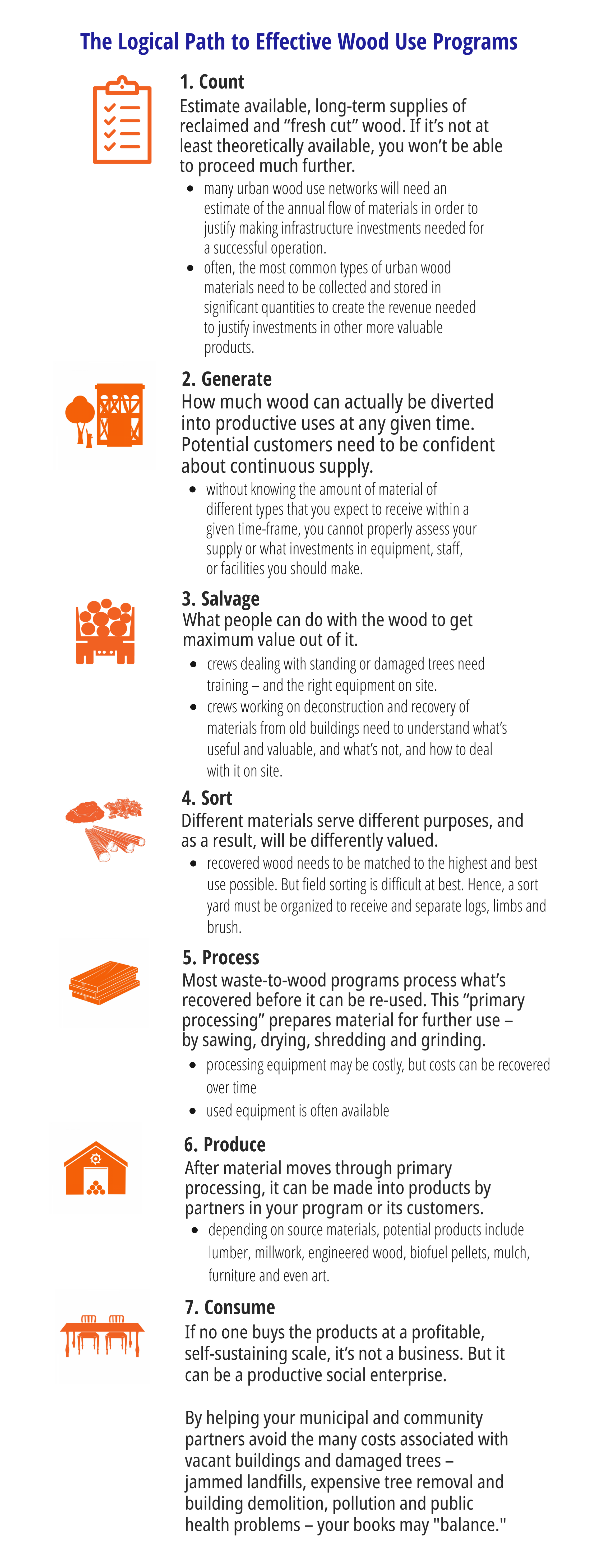
It Works
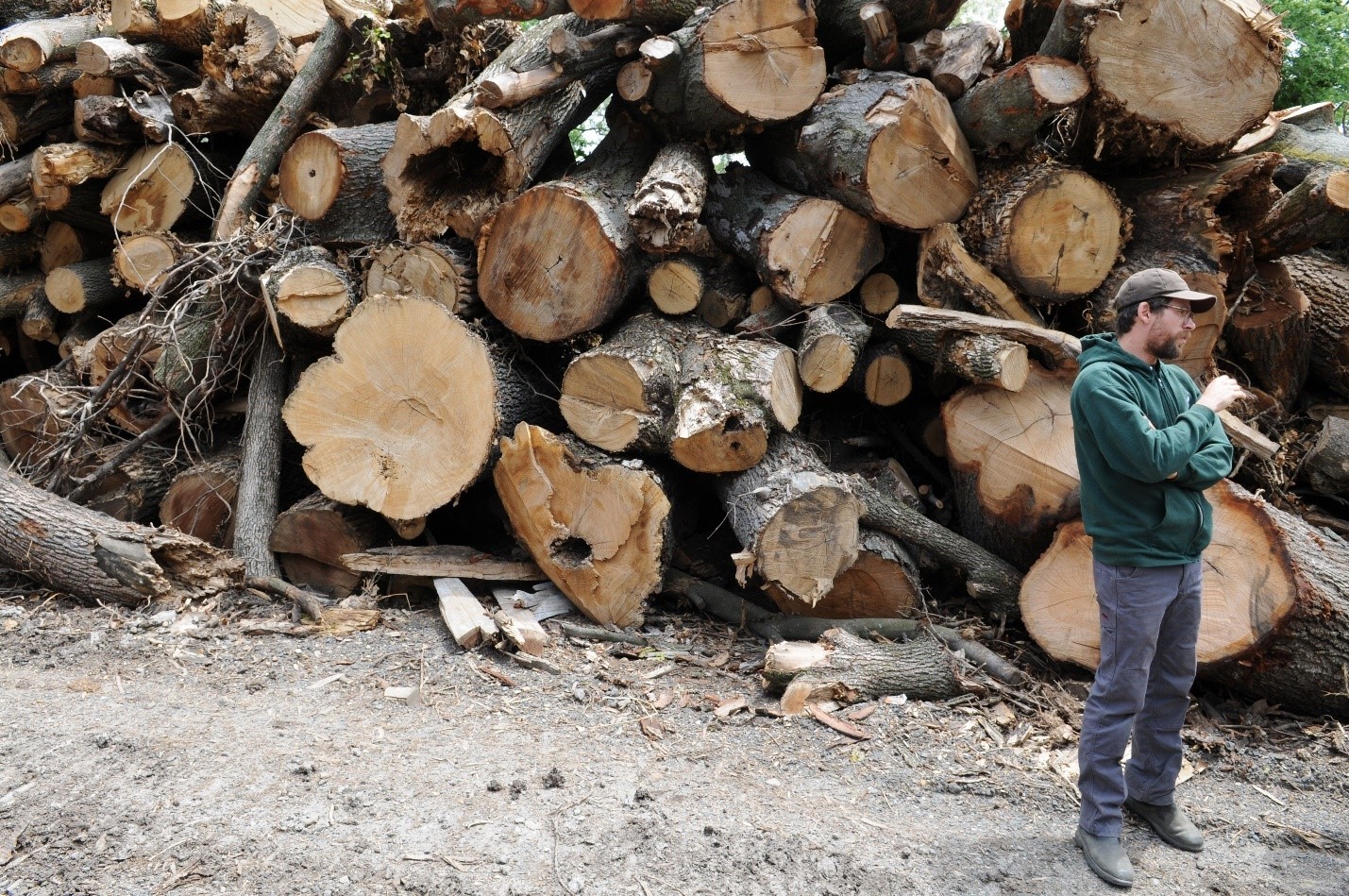
Logs ready for sorting at Camp SmallIn its first year, under yardmaster Shaun Preston, Camp Small saved the city more than $60,000 in disposal costs and provided lumber for city projects.
Because of Partnerships
Humanim
This non-profit social enterprise incubator works to create living-wage jobs for people with significant barriers to employment – incarceration, prior drug use, homelessness.
Their strategy works. Humanim programs have reduced recidivism, jump-started careers, and helped revitalize distressed neighborhoods.
The overall recidivism rate for Baltimore is 40 to 50 percent. The cost of incarcerating a single person amounts to $38,000 a year. For Humanim, among previously incarcerated employees, the recidivism rate averages between 0 and 2 percent annually.
Details
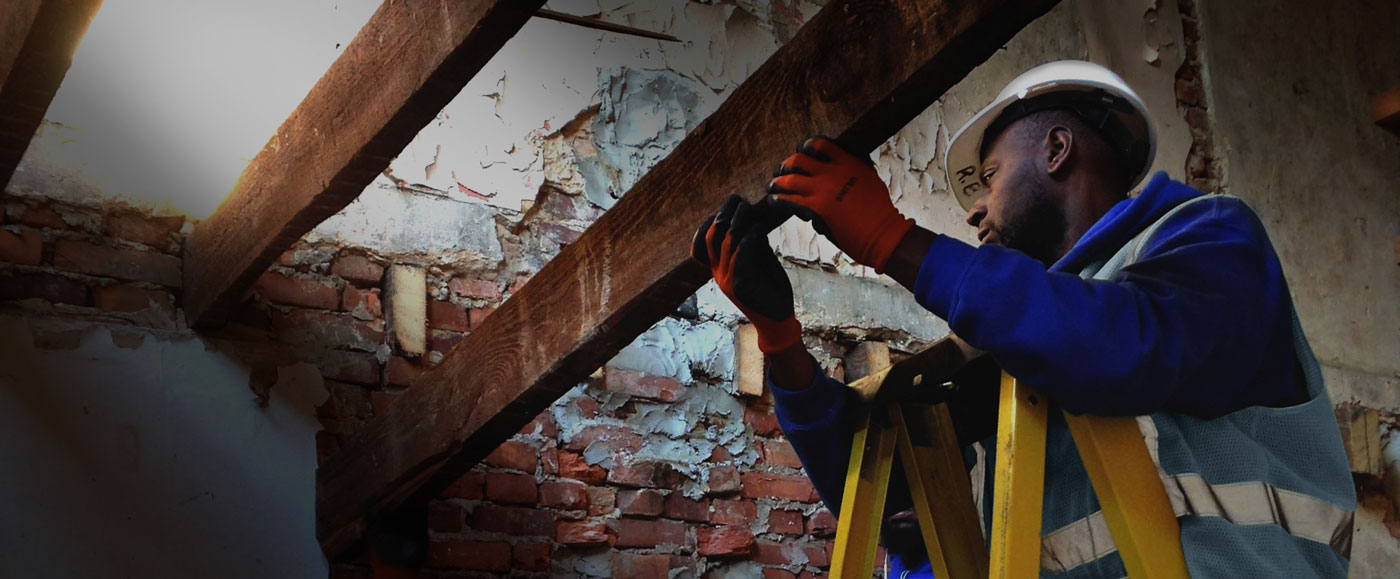
This Humanim social enterprise deconstructs abandoned homes and recovers material for further processing or reuse by architects, furniture makers, artisans and builders.
Their philosophy: “When an old building reaches the end of the line, its bones deserve to live on, and we take pride in harvesting, preserving, and preparing these materials for their next hundred years of life.”
Brick + Board
Another Humanim offshoot markets salvaged materials – from reclaimed hand-formed bricks to marble steps to old-growth planks.
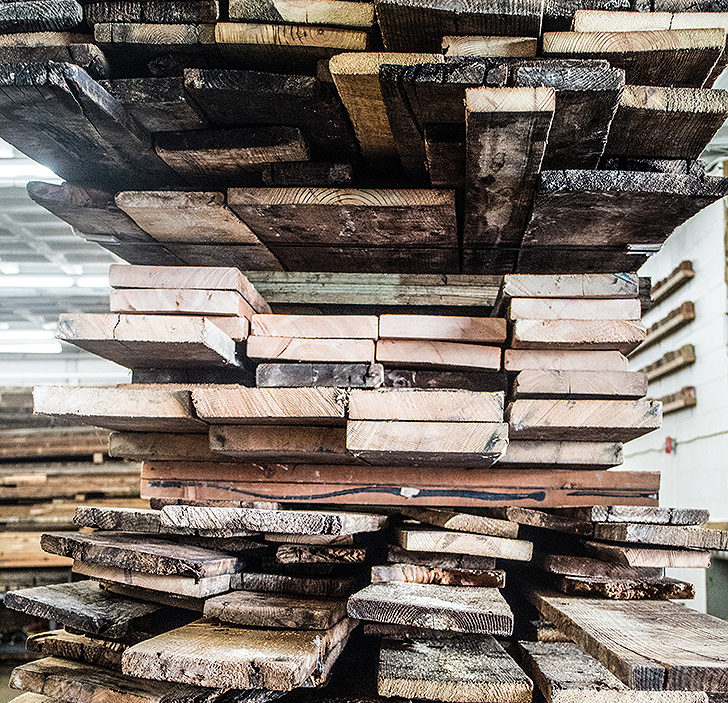
SavATree Consulting Group
Projects like these require guidance from people who know trees – living and diseased, fresh-cut or deconstructed. Different species and types of wood can serve different purposes in their “second life.”
USDA Forest Service
This concept can be applied in many communities around the nation. But to replicate it, the pilot program needs to be studied in depth, and well documented. The Forest Service’s Baltimore Field Station performed this role–maturing into a center for expertise in wood-based economies.
A complete copy of the Urban Wood Use and Reuse handbook will be published shortly.
Quantified Ventures
Finding the money to build out a program like this will always be a challenge. So the Forest Service asked Quantified Ventures to explore how both “fresh cut” and wood salvaged from deconstructed buildings could fuel Baltimore’s “waste to wood” initiative..
Income aside, projects like these deliver considerable non-monetary benefits – like decreased incarceration rates. So success has to be measured in terms of both quantitative and qualitative results – a crucial step forward in sustainability thinking.
Of course, the social benefits aren’t always quantifiable, but in Baltimore the evidence is clear.
Camp Small
The City of Baltimore refurbished its century-old wood and woody debris collection site – and converted it into a sort yard, and primary processing center for fresh-cut wood culled by city arborists as well as wood salvaged from abandoned buildings.
American Forests
This national non-profit organization provided significant funding for Camp Small’s processing facility.
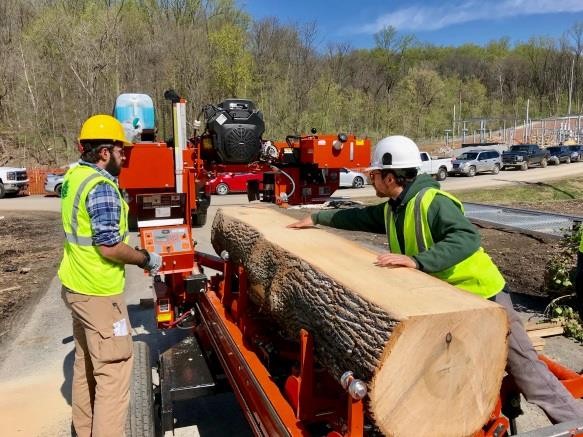
Now American Forests is working with the USDA Forest Service to create tools, training and opportunities for other communities to create their own urban wood use program.

